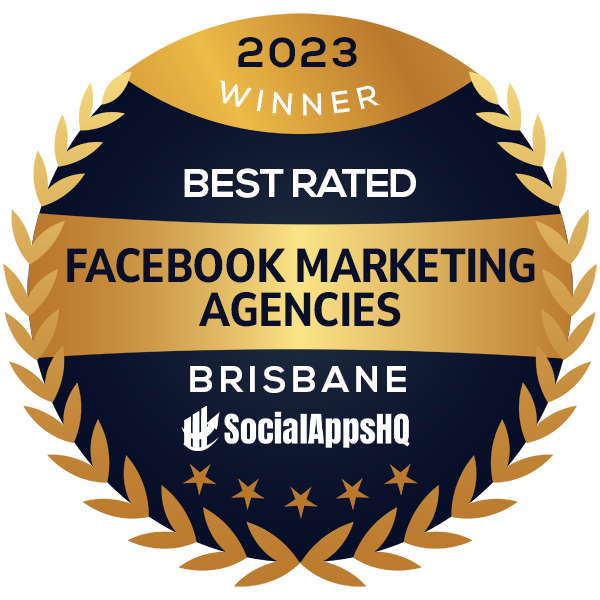Ask ten business owners what marketing is, and you’ll get ten different answers. Some say it’s advertising, others think it’s social media or word of mouth. The truth is, marketing is all of that and much more.
Here’s how I define it:
“Marketing is everything you do to GAIN and RETAIN customers.”
In other words, marketing isn’t just about running ads or posting on your Facebook page. It’s about everything you do to attract people, convert them into buyers, and keep them coming back. If you’ve watched some of my videos or visited my marketing blog before, you’ve probably heard me talk about the three pillars of business success:
- Attract
- Convert
- Deliver
In this article, I’ll share 30 practical strategies across these three pillars to help you grow your business, increase sales, and save time through smarter marketing.
Attraction – How to attract more potential customers
Attracting new customers fuels growth but it’s also something many business owners struggle with. The following ten strategies will help you consistently attract new potential customers. Try combining several of these in your business for the best results.
1. Have a great website
Your website can be so much more than an online brochure. It’s your digital storefront — a place to build trust and generate leads. Yet, many business websites only talk about the company instead of helping visitors solve their problems. Learn what makes a great site with these examples and review the 17 crucial elements every business website needs to convert visitors into customers.
2. Be on social media
Social media can be a powerful engagement tool — if used strategically. Don’t just create an account; be active. Use social platforms to drive potential customers back to your website (where you’re not competing with cat videos). If consistency is an issue, automate it. Tools now let you plan and post content automatically. Check out my complete guide to automating your social media posts to save time and stay visible effortlessly.
3. Run print ads
Even in a digital world, print ads still have their place. The key is to track your success. Don’t pay for “exposure” — pay for measurable results. Use clear calls-to-action like coupons or trackable URLs so you can calculate your return on investment.
Example: If you spend $300 on an ad that brings in 100 leads, that’s $3 per lead. If three of those leads convert at $200 each, you’ve made $600 — doubling your investment. Even if you just break even, you’re still building a valuable customer list.
4. Run online ads (Google, Facebook, YouTube)
Online ads let you target specific audiences precisely. For example, if you own a beauty salon in Sydney, you could show your ad only to women aged 30–50 in your local area who are interested in beauty services. That’s far more cost-effective than paying for print ads that reach people who may never visit your salon.
Always remember: never invest in advertising that can’t be measured.
5. Partner with other businesses
Business partnerships or joint ventures are one of the fastest and most underused ways to grow. For example, I helped a café with a 10,000-person customer list partner with a local massage business. Together, we sent a $25 gift voucher to every café customer — positioning the café as generous while putting the massage therapist in front of thousands of locals instantly. One email, 10,000 people reached. That’s leverage.
6. Write a blog
Your customers already search online for answers. Blogging positions you as the expert they find first. Think of it like owning real estate online — every article becomes a long-term asset that brings traffic for years. This is what I call Evergreen Marketing. Consider hiring a writer to produce 12 high-quality articles, post them monthly, and promote them across your channels.
7. Optimise your website for search engines (SEO)
SEO isn’t dead — it’s evolved. Today, Google rewards readability, valuable content, and engagement. Focus on writing helpful, well-structured content people actually want to read and share. If you’re on WordPress, use the Yoast SEO plugin to optimise each page.
8. Run a competition or giveaway
Giveaways can quickly grow your list — but only if they attract the right people. Avoid generic prizes like iPads. Offer something directly related to your product or service. If you’re an accountant, for instance, offer a free Xero setup or consultation. Always follow up with non-winners to turn interest into sales.
9. Run a survey or quiz
Surveys and quizzes are great for gathering insights and building your list. Keep them short and focused on what helps you improve your offer. Partner with complementary businesses if you don’t yet have your own audience. For more on this strategy, I recommend Ryan Levesque’s book ASK.
10. Send a press release to media outlets
A great story can get you free publicity worth thousands. Focus on human stories — not self-promotion. For example, instead of “Local roofer launches new website,” write “Local roofer helps the homeless stay dry by donating tents for Christmas.” Journalists love stories that connect emotionally. Download my free press release template to get started.
Now that you know how to attract more people to your business, the next step is turning those visitors into paying customers.
Conversion – How to turn browsers into buyers
Attracting attention is only half the battle. Now it’s time to turn that interest into revenue. The Conversion stage is where relationships begin to form and browsers become buyers. This is where your communication, offers, and systems come together to guide people toward a confident “yes.”
These ten strategies will help you create stronger connections, build trust, and convert more leads into loyal customers, without feeling pushy or salesy.
11. Create a lead magnet
A lead magnet is a valuable free offer that attracts your ideal customers — a discount, checklist, eBook, video, or free trial. It should solve a small but meaningful problem and serve as the first step in your customer’s transformation.
12. Use email automation to educate and engage with your audience
Email is still one of the most profitable marketing tools — especially when automated. Set up a series of emails that guide subscribers through a journey: answering FAQs, sharing testimonials, and offering helpful insights before presenting your offer. This keeps you top of mind and moves people closer to buying — automatically.
13. Use a chatbot to help people find what they need faster
Chatbots streamline customer support and sales. They can answer common questions, share your location or pricing, or direct users to your booking page — all while you focus on other things. Tools like Chatfuel and ManyChat integrate seamlessly with social media and websites, helping you provide fast, friendly service 24/7.
14. Create a strong offer people can’t refuse
Sometimes success comes down to packaging. McDonald’s skyrocketed profits by turning individual items into value meals and asking, “Would you like fries with that?” Look for ways to add perceived value — bundles, bonuses, or upgrades — without drastically raising your price.
15. Run retargeting ads
Retargeting ads allow you to follow up with people who already interacted with your brand. For example, show ads only to those who visited your site or watched your webinar. It’s one of the most cost-effective ways to increase conversions because you’re marketing to people who already know you.
16. Find a way to help more people
Ask yourself: “If I had to help 10 times more people than I do now, how would I do it?” Maybe that means shifting from one-on-one to one-to-many models or creating a DIY version of your service. Thinking bigger helps you identify bottlenecks and opportunities for growth.
17. Run ‘limited-time only’ offers
Limited-time offers create urgency and excitement. Test small product batches or temporary services to gauge interest. For instance, a café could offer a special seasonal drink and track how it performs before adding it permanently to the menu.
18. Be easy to do business with
Make it simple for customers to buy from you. Offer multiple payment methods, clear communication options (phone, text, email, social), and frictionless booking or checkout processes. The easier it is, the more people will say “yes.”
19. Get to know your customers better
Never assume you know what your customers want. Ask, listen, and adapt. Understanding their true motivations builds deeper trust and longer-lasting relationships. Sometimes the best sale you can make is recommending something they need before yours.
20. Make sure your website has all the right elements
Your website should do more than “exist.” A great site builds authority, generates leads, answers questions, and converts visitors into buyers. Think of it as your online headquarters — a place where every piece of your marketing connects.
So, you’ve made the sale — congratulations! But marketing doesn’t stop there. What happens next determines whether customers stay for life or disappear after one purchase.
Delivery – How to grow your business during and after the sale
The moment a customer buys from you, a new stage of marketing begins. The Delivery phase is where you turn promises into experiences and customers into raving fans. It’s about delighting people, building loyalty, and inspiring them to come back, maybe even bring their friends.
These final ten strategies will help you strengthen relationships, increase repeat business, and grow through exceptional service and genuine connection.
21. Provide great customer service
Exceptional service creates loyal customers and positive word of mouth. When people feel genuinely cared for, they not only come back — they tell others. Great service is your most underrated marketing channel.
22. Ensure people only buy what they need
Selling the wrong product to the wrong customer hurts your reputation and long-term profits. Focus on fit, not just sales. Honesty builds trust and referrals — the foundation of any sustainable business.
23. Offer high-quality products and services
Marketing brings customers in, but quality keeps them. Review your products regularly, collect feedback, and fix issues fast. The goal? Create experiences so good that people can’t help but tell others about you.
24. Overdeliver and exceed expectations
Surprise your customers with something extra — a handwritten note, bonus content, or unexpected follow-up. These small gestures build emotional connection and turn happy customers into lifelong advocates.
25. Follow up after the sale
Don’t stop communicating once the money changes hands. A simple follow-up email asking, “How are you enjoying your purchase?” shows you care. It also opens doors for feedback, testimonials, and future sales.
26. Invite customers to leave reviews
Positive reviews are today’s word of mouth. Ask for them proactively and make it easy with direct links to Google, Facebook, or TripAdvisor. If you get a negative review, respond with professionalism and empathy. How you handle criticism can actually boost your reputation.
27. Add customer testimonials to your website
Testimonials are social proof in action. Feature them on your homepage, sales pages, and contact page. When possible, include video testimonials — they’re authentic, persuasive, and hard to ignore.
28. Send a thank-you note
Whether it’s a quick email, a handwritten card, or a small gift, gratitude goes a long way. A simple “thank you” turns transactions into relationships and shows customers you truly value their business.
29. Offer upsells and cross-sells
Existing customers are the easiest to sell to. Offer relevant upgrades (upsells) or complementary products (cross-sells) that enhance their experience. When done thoughtfully, these offers feel helpful, not pushy.
30. Consider offering a subscription or membership
Recurring revenue adds stability to your business. From VIP memberships to maintenance plans or exclusive access communities, subscriptions deepen relationships and create predictable income while rewarding your most loyal customers.
Marketing doesn’t have to feel complicated or time-consuming. When you focus on the three pillars — Attract, Convert, and Deliver — everything you do starts working together. Build systems that attract customers automatically, convert them authentically, and deliver experiences that make them stay.
To make this even easier, I’ve created a free Step-by-Step Guide to Automate Your Social Media Posts — the perfect first step to creating your own set-and-forget marketing system.
To your success,


 Done Digital Marketing
Done Digital Marketing Done Digital
Done Digital
